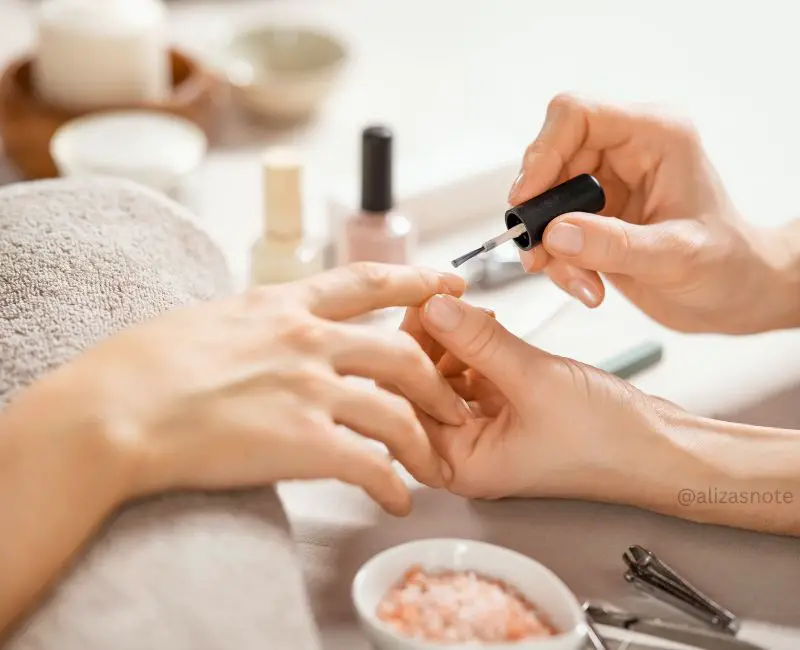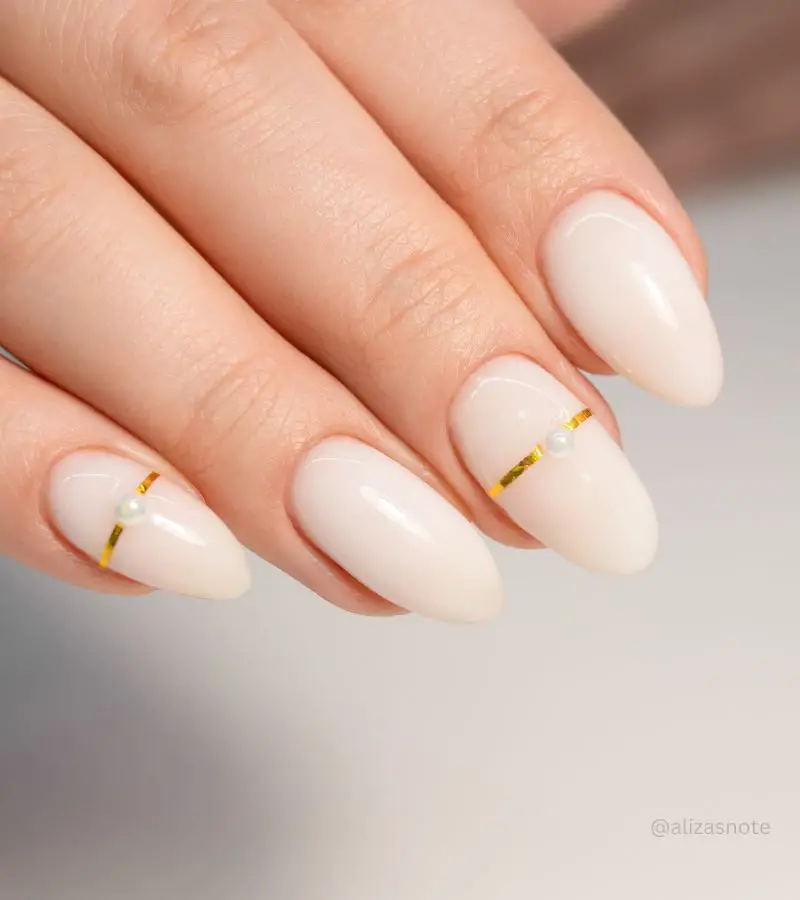Nail polish serves as a cherished form of self-expression, adding a touch of personality to our fingertips. Yet, amidst its popularity, a lingering concern often arises: is wearing nail polish bad for your nails?
Many individuals worry that the chemicals found in nail polish formulations might weaken or damage their nails, leading to issues like brittleness or discoloration. Moreover, the process of applying and removing nail polish, if done incorrectly, can exacerbate these concerns by potentially causing nail damage or dehydration.
When applied and removed with care, nail polish can actually act as a protective barrier, shielding the nails from external elements and preventing moisture loss. It can even deter habits like nail biting or picking, promoting healthier nail growth over time.
Nail Polish Application Techniques:
Nail polish application is an art that demands precision and technique for impeccable results. This fundamental techniques to help you achieve salon-worthy manicures from the comfort of your home:
1. Nail Preparation
Begin by ensuring your nails are clean, dry, and free from any residue. Use a gentle nail polish remover to eliminate oils and impurities, providing a smooth base for your manicure.
2. Base Coat Application
Apply a thin layer of base coat to each nail, starting from the base and moving towards the tip. This step not only enhances polish adherence but also safeguards against staining and extends the longevity of your manicure.
3. Selecting Polish
Choose your desired nail polish color and shake the bottle thoroughly for consistent application. Opt for high-quality polishes with a smooth formula for vibrant color and ease of use.
4. Three-Stroke Technique
Master the three-stroke method for even polish application. Begin near the cuticle and smoothly glide the brush towards the tip in three swift strokes: one down the center, followed by one on each side.
5. Thin Coats
Apply thin coats of polish to prevent streaks, clumps, or uneven coverage. Layering multiple thin coats ensures quicker drying and reduces the risk of smudging.
6. Clean-Up
Utilize a small brush dipped in nail polish remover to tidy up any stray polish or mistakes around the nail bed. This meticulous step contributes to a polished and professional finish.
7. Drying Time
Allow each coat of polish to fully dry before proceeding to the next layer or applying a top coat. Patience during the drying process minimizes the likelihood of smudges or imperfections.
8. Top Coat Application
Seal in your manicure with a top coat to enhance shine and prolong wear. The top coat acts as a protective barrier, guarding against chips and ensuring lasting color vibrancy.
9. Post-Manicure Care
After your manicure is complete, pamper your hands with a nourishing cuticle oil or hand cream. Hydrating the skin around your nails maintains their health and enhances overall appearance.
10. Final Touch
Complete your manicure routine with attention to detail, ensuring every nail is pristine and flawless. Admire your handiwork and enjoy the confidence of beautifully polished nails.
Enjoy your at-home nail care routine and retouch your creativity, knowing you have the skills to achieve stunning results every time.
Is wearing nail polish bad for your nails:
While some argue that frequent polish application weakens nails, others maintain that proper care can mitigate any potential harm. Lets get some common concern and examine whether wearing nail polish poses risks to nail health:
- Nail Structure
To grasp the effects of nail polish, it’s crucial to understand the composition of nails. Nails consist of layers of keratin protein, with the nail plate forming the outermost layer. This is the part that we paint with nail polish.
The Effects of Nail Polish: While nail polish itself isn’t inherently damaging, certain factors associated with its application and removal can impact nail health:
- Chemical Exposure
Some nail polish formulas contain chemicals like formaldehyde and toluene, which can weaken nails over time. Prolonged exposure to these chemicals may lead to brittleness or discoloration.
- Nail Dehydration
Frequent nail polish use, especially without breaks, can dehydrate nails, causing dryness and peeling. Acetone-based polish removers further exacerbate this by stripping natural oils from the nails.
- Staining and Discoloration
Dark-colored nail polishes, particularly without a protective base coat, can stain nails, leaving them discolored or yellowed.
To minimize any negative effects of wearing nail polish, consider the following steps:
- Choose Wisely
Opt for nail polish brands that offer “5-free” or “7-free” formulas, free from harmful chemicals. Look for polishes enriched with nourishing ingredients like vitamin E or keratin.
- Take Breaks
Allow your nails a breather by polish-free for a few days each bi-week/month. This allows nails to recover and prevents dehydration.
- Hydrate and Protect
Keep nails hydrated by regularly applying cuticle oil or moisturizing hand cream. This replenishes moisture and maintains nail flexibility.
- Use Gentle Removers
Select acetone-free nail polish removers, which are gentler on nails and cuticles. Alternatively, explore gentler removal methods such as peel-off base coats or soak-off gels.
Moderation and proper care are crucial for maintaining resilient and healthy nails, regardless of your polish preferences.
Nail Health Considerations
Some essential factors that contribute to nail health is vital for maintaining strong, resilient, and beautiful nails.
- Balanced Nutrition
A well-rounded diet rich in protein, vitamins, and minerals is essential for nail health. Incorporate lean proteins, fruits, vegetables, and whole grains to provide the nutrients necessary for strong and healthy nails.
- Hydration
Adequate hydration is crucial for nail health. Ensure you drink enough water daily to keep your nails and cuticles hydrated, preventing dryness and brittleness.
- Consistent Nail Care
Establish a regular nail care routine to promote nail health. Trim nails regularly, file gently, and refrain from biting or picking to prevent damage and breakage.
- Moisturization
Keep nails and cuticles moisturized with regular application of a nourishing hand cream or cuticle oil. Moisturized nails are less prone to cracking, splitting, and peeling.
- Protective Measures
Shield nails from harsh chemicals and excessive moisture by wearing gloves during household chores or gardening. Avoid prolonged exposure to water and chemicals, which can weaken nails.
- Optimal Nail Polish Use
Choose high-quality polishes free from harmful chemicals and apply a base coat to prevent staining. Seal in color with a top coat to enhance shine and durability.
- Rest Periods
Give nails occasional breaks from polish to allow them to breathe and recover. This helps prevent dehydration and promotes natural nail health.
- Minimize Trauma
Prevent nail trauma by avoiding activities that may cause damage, such as using nails as tools or tapping on hard surfaces excessively.
- Regular Monitoring
Stay vigilant for any changes in your nails, including discoloration or unusual growth patterns. Consult a dermatologist if you notice any abnormalities for proper evaluation and treatment.
- Healthy Lifestyle Choices
Maintain a healthy lifestyle with regular exercise, stress management, and sufficient sleep to support overall nail health. Reduced stress levels can help prevent nail biting and encourage healthy nail growth.
Prioritizing these essential factors into your daily routine and lifestyle, you can nurture strong, resilient, and beautiful nails that reflect your overall well-being.
Read Others Post:
10 Remedies For Stronger Nails
How To Soothe Nails
How To Treat Yellow Nails At home
Side Effects Of Nail Polish On Nails
Can You Cut Nails with Gel Polish
Take Care Of Long Nails
What Do You Soak For A Manicure
Last Call:
- While nail polish itself doesn’t inherently harm nails, certain practices linked to its application and removal can potentially weaken them over time.
- It’s important to strike a harmony between indulging in the aesthetic pleasure of nail polish and prioritizing long-term nail health.
Call to action:
- Join us every day for a plethora of insightful tips, expert advice, and engaging discussions dedicated to all things nails.
- Connect with us on Pinterest to explore an abundance of inspiration, from trendy nail art designs to essential nail care routines.
FAQ:
Q. Is it bad for your nails to wear nail polish all the time?
Regularly wearing nail polish can potentially weaken nails due to prolonged exposure to chemicals and lack of oxygen. It’s advisable to allow nails periodic breaks to breathe and recuperate.
Q. Does nail polish weaken your nails?
While nail polish itself isn’t inherently detrimental, some formulations may contain chemicals that can weaken nails over time. Opting for high-quality, non-toxic polishes and employing proper application and removal techniques can minimize potential damage.
Q: Can nail polish result in nail discoloration?
Dark-colored nail polishes, especially without a protective base coat, can occasionally cause nail discoloration or staining. Using a base coat prior to polish application can help prevent this issue.
Q: Does frequent nail polish removal damage nails?
Regular use of nail polish removers, particularly those containing acetone, can strip nails of natural oils and moisture, leading to dryness and brittleness. Opt for gentle, acetone-free removers and moisturize nails post-removal to mitigate potential harm.
Q: How can nails be strengthened after using polish?
To bolster nails post-polish, focus on nourishing and hydrating them with cuticle oils, hand creams, and nail strengtheners fortified with vitamins and minerals. Additionally, taking breaks from polish and maintaining a well-rounded diet can promote nail health and strength.



